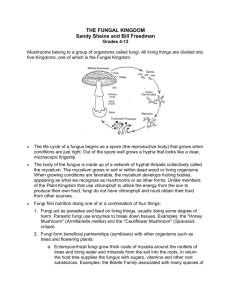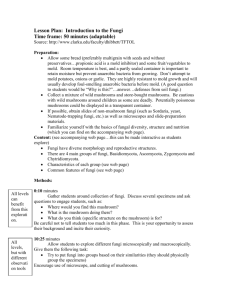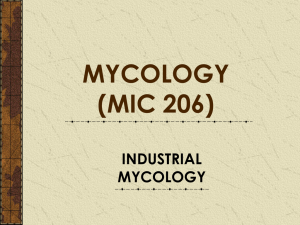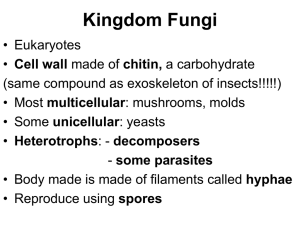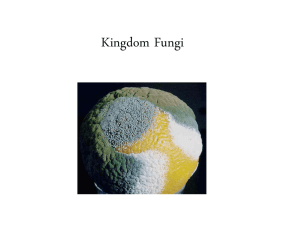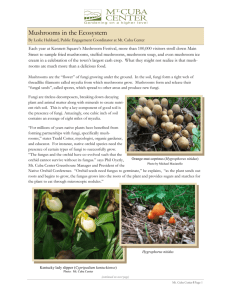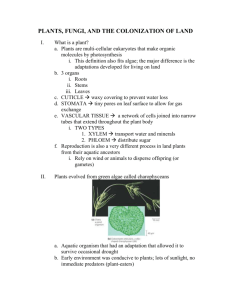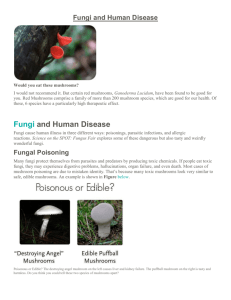FOSS FUNGUS SLIDESHOW
advertisement
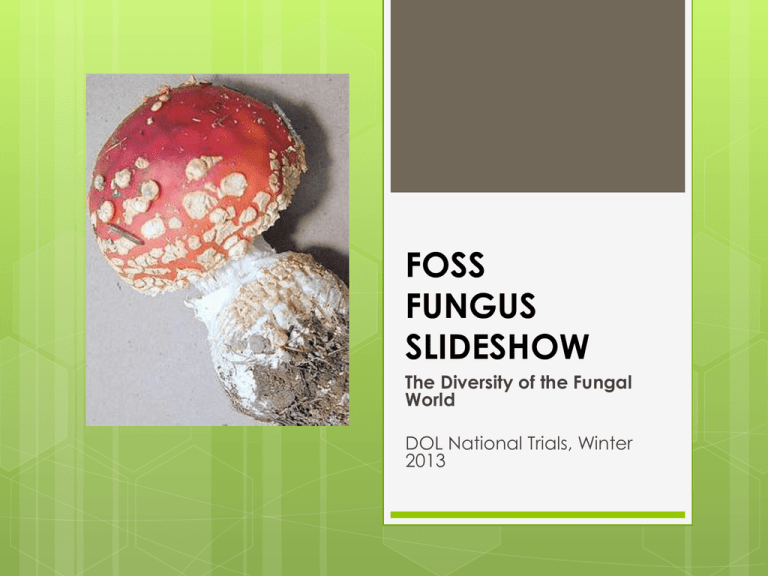
FOSS FUNGUS SLIDESHOW The Diversity of the Fungal World DOL National Trials, Winter 2013 Fungal Diversity Yeast Mold Mushrooms Mildew Lichens Beneficial Fungi What do you know about penicillin? Penicillin is an antibiotic made from the mold, Penicillium crysogenum. It was discovered in 1929 by Alexander Fleming. The mold releases a chemical that keeps bacteria from forming new cell walls when they divide, effectively killing them. Beneficial Fungi What are some other ways in which fungi are beneficial? Other Penicillium molds are used to make camembert, brie and gorgonzola cheeses! Beneficial Fungi We eat mushrooms and use yeast to make bread. 90% of all mushrooms grown for food in the U.S. and Europe are button mushrooms, Agaricus bisporus. When this mushroom matures, it is called the portobello mushroom. Beneficial Fungi Fungi are important decomposers. They break down dead stuff and return the nutrients to the soil. Potentially Harmful Fungi What are some ways in which fungi can be dangerous? Some fungi are poisonous. The destroying angel mushroom looks harmless enough, but eating just one can kill a person. These fungi cause more than 90% of mushroomrelated deaths. Potentially Harmful Fungi Spores from molds and mildew that grow in damp houses can cause respiratory problems, asthma attacks, and irritations in the eyes, nose, and throat. Lichens What are lichens and where can you find them? A fungus teams up with a photosynthetic algae to form a partnership called a lichen. Lichens are commonly found on trees in the forest, but have been observed in many places, including on rocks, in the Arctic and in deserts. Some Fun Fungi Facts Fungi don’t need light to grow. Fungal spores have lasted hundreds of years. In a cubic centimeter of soil, there may be 8 miles of hyphae (mycelium)!!! Some fungi have proven effective in killing viruses like the flu. Fungi were the first organisms to come to land over 1.3 billion years ago! On a final note… The largest living organism in the world may be a fungus. It covers a space about the size of 1,665 football fields! It grows in a forest in Oregon and spreads underground by intertwining threads of hyphae, the mycelium. Honey mushrooms spring up.

